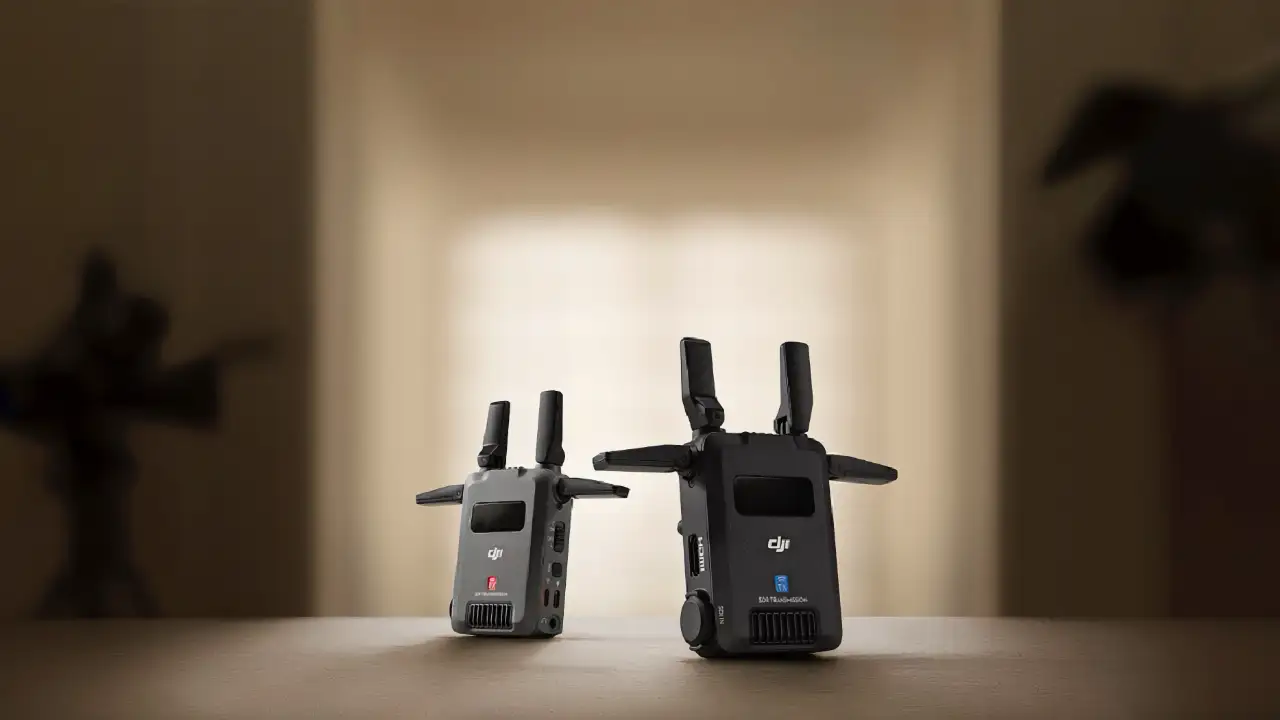
DJI says its new DJI SDR Transmission system offers filmmakers a reliable, flexible, and efficient method for video transmission and monitoring on-set.
Designed for small- and medium-sized film crews, DJI SDR Transmission offers a range of decent features when it comes to on-set video transmission including stability, strong interference resistance, and robust penetration capabilities. For instances that require temporary monitoring, it can also support WiFi transmissions simultaneously, giving filmmakers some useful flexibility.
As the name suggests, the system uses software defined radio (SDR) technology. On connected monitors, filmmakers will see 1080p/60 fps live feeds with a bitrate of up to 20 Mbps and a delay as low as 35 milliseconds. Videos can be transmitted up to 3 kilometers (1.8 miles) away. When faced with interferences on a channel, it automatically hops across 2.4 GHz, 5.8 GHz, and DFS frequency bands to find the most optimal channel.
The transmitter can output three SDR signals and two WiFi signals simultaneously. In broadcast mode, it can connect to unlimited receivers, providing a high-quality monitoring experience for multiple collaborators. The receiver, meanwhile, can connect to monitors via SDI/HDMI and smartphones and tablets via USB-C or Wi-Fi.

The DJI SDR Transmission Transmitter...
A wider ecosystem
It also has some very interesting functions when used as part of the wider DJI ecosystem. Used with the DJI RS Series Stabilizers, the DJI SDR Transmission supports Force Mobile, virtual joystick, and gimbal recentering functions. When paired with a camera, it can support PTP control, displaying and adjusting aperture, shutter, ISO, and even trigger the camera's photo-taking and video-recording functions through the app. It can also support CEC control of Sony cameras to bring Mirror Control mode into play.
DJI SDR Transmission can also transmit metadata, facilitating collaboration throughout filming. When connected to the DJI Ronin app in Broadcast mode, users can seamlessly switch between camera indexes within the app. Mainstream cinema cameras like ARRI and RED can be adapted via SDI, giving directors, cinematographers, and DIT teams real-time access to detailed shooting information.

...and the DJI SDR Transmission Receiver. Spot the differences
It uses a standard PD protocol charger with a USB-C power input. It can also be powered directly by DJI RS 4 Pro, DJI RS 4, or DJI RS 3 Pro when mounted and used together, eliminating the need for a separate battery. On its own, both the transmitter and receiver support industry-standard NP-F batteries.
A single transmitter or receiver weighs only 145 g (5.1 oz). And the antenna fold down, making it a cinch to carry and store.
The DJI SDR Transmission Transmitter costs $309, the DJI SDR Transmission Receiver also $309, and the rather more useful pair together comes in at $549.
Tags: Production


Comments